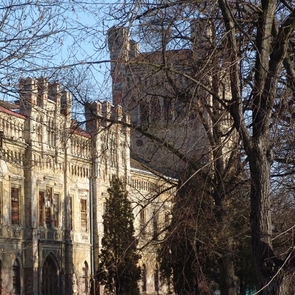
The city of Galanta (pop. 16.500) is situated in the SW part of Slovak Republic, about 50 kms NE from the capital city, Bratislava. Galanta pioneered in the use of renewable energy sources among the countries behind the “Iron Curtain” by developing its own geothermal-based district heating system in the early 1980s. The two production wells (FGG-2 (drilled in 1982) and FGG-3 (in 1984)) - tapping into the reservoir of Upper Pannonian sandstone (similar to the one at Morahalom) at 2101m and 2102m depths respectively - provide the necessary quantity (regulated 20-25 l/s each) of the 78°C geothermal fluid for a whole district of the city, where it is utilised as a heating agent and also for DHW purposes.Read more
Prior to the launch of the project multiple apartment buildings, a hospital, an elderly home, a nursery and an elementary school was connected to the heating system. The current legislative framework in effect doesn’t regulate reinjection, which accounts for the discharge of about 0.5 million m3 of used, still warm and highly mineralised thermal water into the surface waters with all its unfavourable impacts on the environment. Since introducing new policies for a more sustainable management of this natural resource was out of the scope of the GEOCOM project, local activities were focused on actions which could increase the overall efficiency of the existing setup by connecting additional estates (increasing the total heated floor area) to the geothermal loop and by improving the energy efficiency parameters of those buildings which are already benefiting from the service. Within the frame of the project the thermal capacity of the geothermal system was increased by 1239 kW. This investment has triggered the erection of three new municipal housing units (total 101 new apartments) and a few more facilities within the range of the district heating system which are today connected to the loop. The project focused at this demonstration site also on improving the energy efficiency of those estates which are supplied by the geothermal heat. For this reason 3 housing units, a kindergarten and a primary school were selected as subjects for the model retrofitting actions complemented by basic system integration measures.
The retrofitting action carried out at three multi-stories housing units in the pilot district were aimed at demonstrating a more efficient use of heating energy, thus improving the overall performance of the geothermal district heating system. The selected block-of-flats represent a very common housing solution in the region of East-Central Europe rendering them to be considered as potential pilot actions of improving energy efficiency at a unit level. Prior to the GEOCOM interventions the target buildings – made of prefabricated concrete blocks - were characterized by very poor energy performances (~78 kWh/m2/yr), which caused significant losses both to the tenants and to the district heating system.
Standard façade and roof insulation combined with windows replacement improved all the key parameters, reducing the amount of heat needed to achieve the same level of comfort. The surplus heat, which was previously wasted, can be transferred to other downstream consumers allowing them to cut on their complementary natural gas use and ultimately on their operational costs. Two public institutions (an elementary school and a kindergarten) on the heating loop were also subject of refurbishment, though interventions were limited to the replacement of the windows at these locations. However such a restricted set of action alone was able to bring significant savings making it a medium cost high impact delivery. In line with the overall aims of the project the base geothermal heat source at the target buildings was combined with another renewable energy source, in this case solar PV panels were installed on the rooftops. The very small scale, micro-plants (1.5kW each) were designed to cover the power needs of the common areas at the housing units while a larger (5kW) unit had been planned to offset some of the elementary school’s power need.